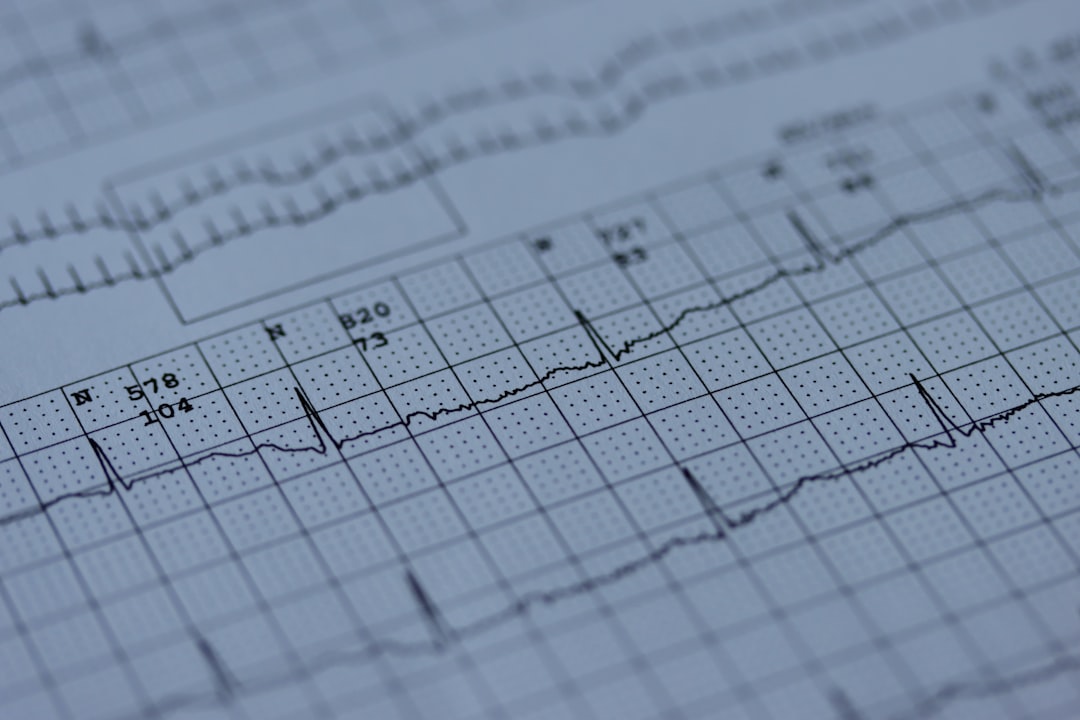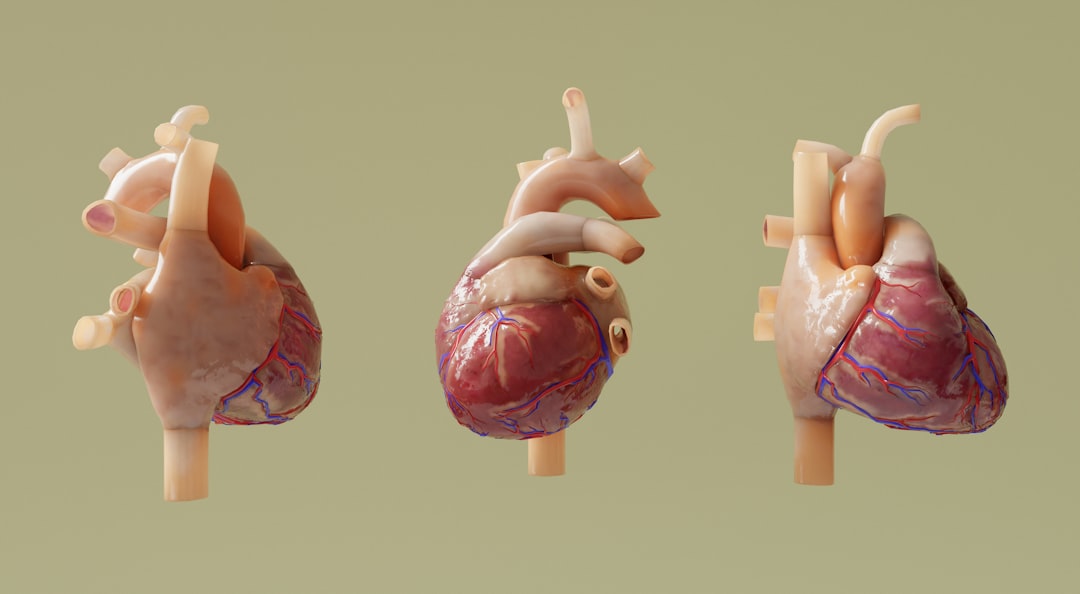

Engage prospects with a scan and streamline customer engagement with FREE QR code marketing tools by Sona – no strings attached!
Create a Free QR CodeFree consultation

No commitment

Engage prospects with a scan and streamline customer engagement with FREE QR code marketing tools by Sona – no strings attached!
Create a Free QR CodeFree consultation

No commitment
Cardiology clinics today face complex challenges. Not only must they deliver exceptional patient experiences amid rapid medical advances, but they also navigate increased pressure to gather meaningful feedback in an environment where patient trust is paramount. Outdated feedback collection methods, such as paper surveys or static online forms, reduce participation, create delays, and often result in missed insights, hampering the clinic’s ability to adapt care proactively and retain patients. Research consistently shows digital tools can improve patient engagement and outcomes when thoughtfully applied.
Emerging digital tools like QR codes bridge this gap by providing a user-friendly way for patients to share feedback, book appointments, or access educational content with a simple scan. By removing barriers such as app downloads or lengthy logins, clinics can boost response rates and improve the quality of collected data. Real-time survey access at critical touchpoints, such as check-in or discharge, ensures genuine experiences are captured while details are fresh, enabling faster reactions to patient needs.
When thoughtfully integrated, QR code workflows do more than streamline data collection; they enhance compliance, drive patient engagement, and increase operational efficiency. By translating patient interactions into actionable and trackable data, cardiology clinics can quickly identify care gaps, personalize communication, and adapt to evolving expectations, all while upholding privacy, security, and trust. This guide explores how QR codes empower clinics to transform feedback into measurable improvements.

Many cardiology clinics still struggle to capture the full scope of patient sentiment. Manual forms often go unreturned, online links sent after visits are easily ignored, and staff have limited time to chase incomplete data. The result is a patchy view of the patient experience and missed signals from dissatisfied or at-risk patients who may never return or leave negative reviews elsewhere.
QR code integration re-centers feedback around the patient’s moment of truth. By placing scannable entry points at waiting areas, exam rooms, bedside, and discharge, clinics invite patients to respond when their experience is vivid and their motivation to share is highest. The result is more participation, more context, and more actionable insights using survey QR codes.
Start small with one or two high-traffic touchpoints, then expand as staff become comfortable with the process. By embedding QR codes where patients naturally pause, clinics convert moments of downtime into moments of insight that shape better care and stronger relationships. Start creating QR codes for free.

Cardiology practices handle complex cases with high stakes. Communication must be clear and timely, and feedback needs to be precise so the clinic can refine processes that affect safety, satisfaction, and outcomes. Traditional methods struggle to collect data fast enough to guide same-day improvements or triage service recovery. QR codes fill this gap with speed, flexibility, and measurable data.
They also help bridge the offline-to-online divide that characterizes many clinical encounters. A patient may see a poster about medication adherence or rehabilitation exercises but forget the details by the time they get home. A QR code placed next to that message lets them act instantly, saving resources and improving adherence.
For cardiology clinics, these advantages translate into a continuous improvement engine. Each scan fuels learning and rapid iteration, from reducing wait times to refining telemedicine onboarding and medication education.

Different moments in the patient journey require different actions. Matching the right QR format to each context removes friction and makes engagement predictable and easy. Cardiology clinics benefit from a mix of formats that support feedback, communication, follow-up, and education.
Static QR codes point to destinations that rarely change, such as a stable educational PDF. Dynamic codes route to content that evolves over time or requires analytics and retargeting. Most feedback and engagement scenarios benefit from dynamic codes because they allow easy updates and granular tracking.
Implementing multiple formats lets clinics serve different preferences and accessibility needs. Dynamic codes managed in a single platform allow staff to adjust destinations quickly as protocols or campaigns change.

QR codes belong wherever patients make decisions, wait, or need clarity. Cardiology clinics have a rich set of offline surfaces that can be turned into digital entry points for feedback, education, and follow-up. Thoughtful placement ensures high visibility and relevance so scans feel natural rather than disruptive.
Prioritize areas where patients have a moment to engage. Messaging should be concise with a clear benefit such as Help us improve your experience in 60 seconds or Scan for home blood pressure tips. Pair QR codes with friendly, informative visuals to invite action.
This multi-channel approach systematically converts physical touchpoints into digital signals. Clinics gain visibility into the patient journey from first visit to follow-up, ensuring that silence does not hide dissatisfaction.

Cardiology teams often juggle complex care plans, multiple follow-ups, and cross-disciplinary coordination. QR codes streamline the flow of information and make it easier for patients to engage. The following use cases target common friction points that affect satisfaction, adherence, and retention.
By aligning each code with a clear purpose, clinics can track outcomes such as response rates, time to follow up, and patient-reported improvements. Over time these metrics paint a detailed picture of what matters most to patients and where to invest. For practical healthcare examples, see QR tips for healthcare.
Each use case benefits from dynamic codes so destinations can be updated without reprinting materials. Analytics help teams learn which messages resonate and which formats drive the highest completion rates.
Every scan is a signal that carries context: why the patient scanned, where they were, and what they needed. By deploying multiple QR codes across the journey and tagging each one by intent and placement, clinics can build segmented audiences that support personalized follow-up.
Segmentation is particularly valuable in cardiology where needs vary widely by condition, procedure type, and recovery stage. Linking scan activity to patient records in a compliant manner lets teams tailor outreach without asking patients to repeat information. Sona is an AI-powered marketing platform that turns first-party data into revenue through automated attribution, data activation, and workflow orchestration. For strategy on building segments from signals, read Sona’s intent data guide.
Segmented audiences make retargeting both ethical and effective. Patients receive relevant, timely support while clinics allocate resources where they will have the greatest impact.
Marketing fragmentation wastes budget and confuses patients. QR codes unify offline and online experiences by making it easy to take action from any channel. When scans flow into a centralized analytics and CRM stack, teams gain a single source of truth about what works and why.
For cardiology clinics, integration ensures that educational campaigns, preventive screenings, and service updates stay consistent across materials. Patients can start with a flyer, continue on the website, and receive a personalized follow-up without friction or repetition.
This integrated approach raises the effectiveness of every channel. QR codes not only connect patients to the next best step, they also give clinics the data to optimize spend and refine content.
Effective QR campaigns begin with clear goals and end with measurable improvements. Use the following steps to plan, deploy, and optimize your initiative across the clinic.
Start by clarifying what success looks like. In cardiology clinics, two high-impact goals are increasing post-visit survey completion and accelerating telemedicine onboarding. Outline the key metric, the current baseline, and the target timeline.
Pick a QR format that supports your goal and future flexibility. Dynamic codes are recommended for most feedback and onboarding use cases since they provide analytics and can be updated without reprinting.
Design influences trust and scan rates. Patients are more likely to scan codes that look official, promise value, and are easy to read in the clinical environment.
Place codes where patients are most likely to engage and where the action is contextually relevant. A feedback code belongs where patients reflect on their experience, not buried in a packet they will open at home days later.
Treat QR campaigns as living systems. Regularly review analytics, listen to staff and patients, and iterate. Use a platform such as Sona QR to centralize data and streamline updates.
Proving that feedback initiatives drive business outcomes is essential for executive buy-in and sustained investment. Robust QR analytics make it possible to connect a simple scan to meaningful clinical and financial results. When patients scan codes to complete surveys, schedule follow-ups, or access rehab content, those actions can be measured, attributed, and improved.
A comprehensive analytics stack tracks scans and ties them to downstream outcomes such as reduced missed appointments, higher portal adoption, faster service recovery, and increased retention. These gains influence revenue through better capacity utilization, fewer no-shows, and stronger loyalty. For connecting physical touchpoints to outcomes, see Sona’s offline attribution guide.
Platforms like Sona QR and Sona.com simplify this work by capturing detailed scan events, unifying fragmented touchpoints, and syncing data to CRMs and analytics tools. For building recognized audiences, learn Sona’s approach to account identification.
Scaling QR initiatives requires thoughtful design, clear messaging, and dependable workflows. The clinics that excel treat QR codes as a patient experience tool, not just a marketing tactic. They promote the benefit, make scanning effortless, and automate next steps.
Operational discipline matters, too. Unique codes per placement, consistent tagging, and integrated data flows ensure that results are measurable and improvements are repeatable.
Consider creative deployments that fit your environment. For instance, include QR codes on lab result envelopes that link to a short guide on interpreting lipid panels, or on rehab attendance cards that let patients log daily progress.
Clinics that lean into QR codes often discover new ways to listen and serve. The following examples illustrate how a simple scan can become a meaningful interaction that builds trust, captures insight, and improves care.
The key is to align each code with a clear value proposition and a specific next step. When patients immediately see the benefit, they scan more often and share more candidly. For outreach best practices, see this overview of healthcare marketing strategies.
These examples are starting points. The most effective programs are co-designed with staff who understand patient flow and with patients who can validate what feels helpful versus intrusive.
Even strong QR programs can falter without attention to placement, message clarity, and staff involvement. Common mistakes include burying codes in cluttered posters, failing to articulate the benefit, or linking to long, unfriendly forms that discourage completion.
Avoid these pitfalls by focusing on the fundamentals of visibility, simplicity, and trust. Ask patients and staff for feedback on what is working and what feels confusing, then iterate quickly.
Investing in these basics turns QR campaigns into durable assets. The payoff is a steady stream of high-quality input that drives meaningful improvements and supports operational excellence.
QR codes may appear simple, yet they unlock a strategic advantage for cardiology clinics. By meeting patients where they are and inviting immediate action, clinics gather richer feedback, remove friction from digital onboarding, and deliver education that patients actually use. Each scan becomes a touchpoint that informs better service and strengthens trust.
Embedding QR codes into everyday workflows transforms feedback from an afterthought into a real-time driver of quality, efficiency, and patient satisfaction. Clinics that adopt a data-driven, privacy-conscious approach will close the loop faster, respond more effectively to patient needs, and build loyalty in a competitive landscape. With the right platform to manage dynamic codes, track analytics, and sync data with existing systems, teams can launch quickly, iterate confidently, and scale what works. Tools like Sona QR provide an integrated foundation to generate, manage, and attribute QR engagement so you can move from insight to action with clarity and speed. For connecting results to revenue, explore Sona’s take on revenue attribution.
QR codes have transformed cardiology clinics from traditional feedback collection methods into dynamic, real-time patient engagement tools. By simplifying how patients share their experiences, clinics can gather actionable insights that improve care quality, boost patient satisfaction, and enhance clinical outcomes. Imagine knowing exactly which touchpoints in your clinic foster the most valuable feedback—and being able to optimize those interactions instantly.
With Sona QR, cardiology clinics can create dynamic, trackable QR codes in seconds, update feedback campaigns on the fly without costly reprints, and link every scan to meaningful improvements in patient care. No more guesswork or delayed responses—just smarter, patient-centered engagement that drives continuous improvement. Start for free with Sona QR today and turn every patient scan into a powerful step toward excellence in cardiology care.
QR codes in cardiology clinics improve patient engagement, streamline feedback collection, enhance operational efficiency, increase response rates, and provide real-time, actionable data while maintaining privacy and trust.
QR codes enable timely and precise feedback collection at critical touchpoints, facilitate patient education access, support medication adherence, and allow rapid service recovery, all contributing to personalized and improved patient care.
Effective strategies include integrating QR codes into brochures, direct mail reminders, community events, digital signage, and social media to unify offline and online patient experiences and track engagement across channels.
QR codes on discharge summaries or welcome packets guide patients to telemedicine apps, help complete pre-visit questionnaires, and reduce missed or delayed virtual appointments by simplifying onboarding.
QR codes can be used for in-clinic feedback, telemedicine onboarding, patient education, medication adherence support, post-procedure monitoring, cardiac rehab engagement, appointment booking, and contact sharing.
Use Sona QR's trackable codes to improve customer acquisition and engagement today.
Create Your FREE Trackable QR Code in SecondsJoin results-focused teams combining Sona Platform automation with advanced Google Ads strategies to scale lead generation

Connect your existing CRM

Free Account Enrichment

No setup fees
No commitment required

Free consultation

Get a custom Google Ads roadmap for your business






Launch campaigns that generate qualified leads in 30 days or less.
